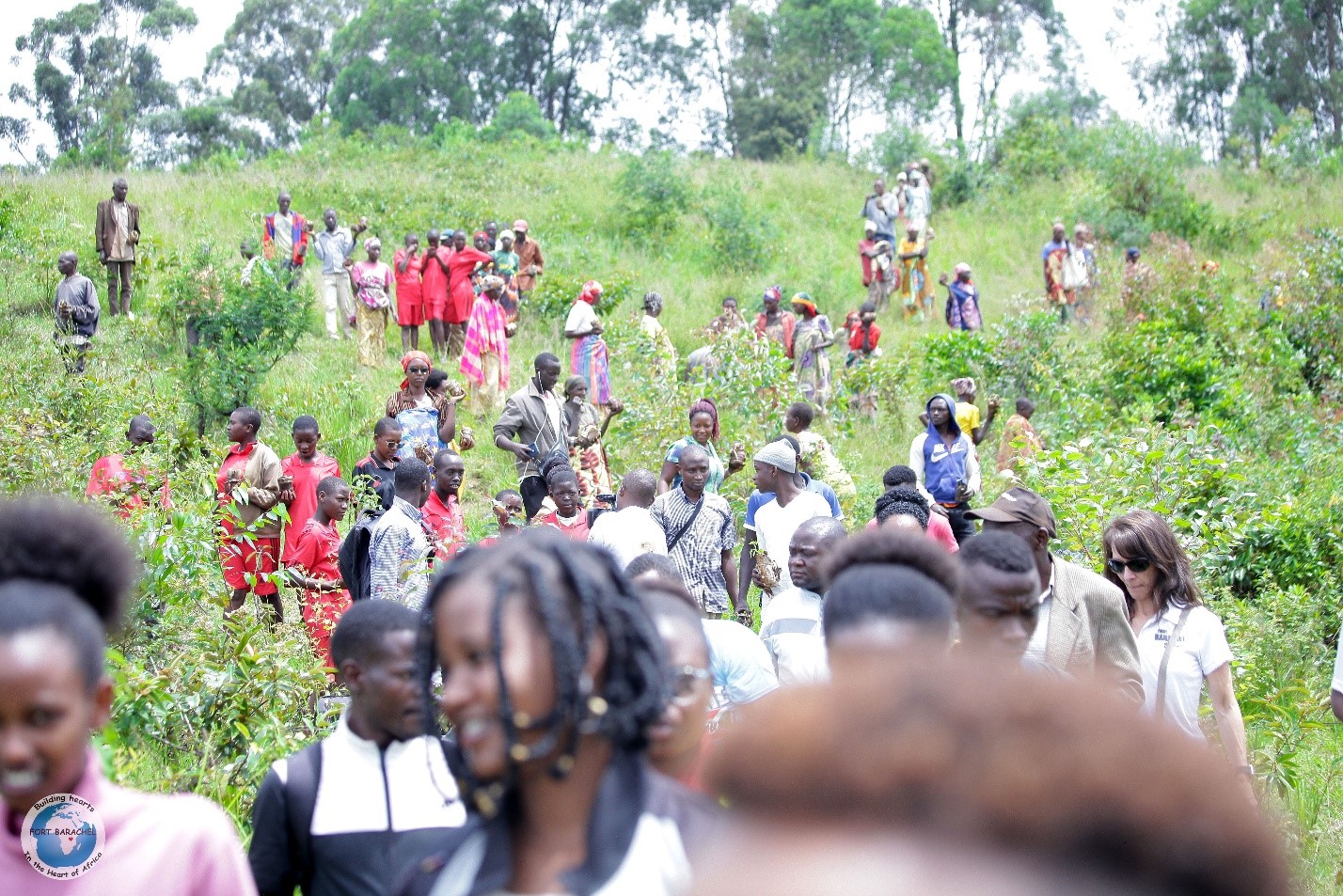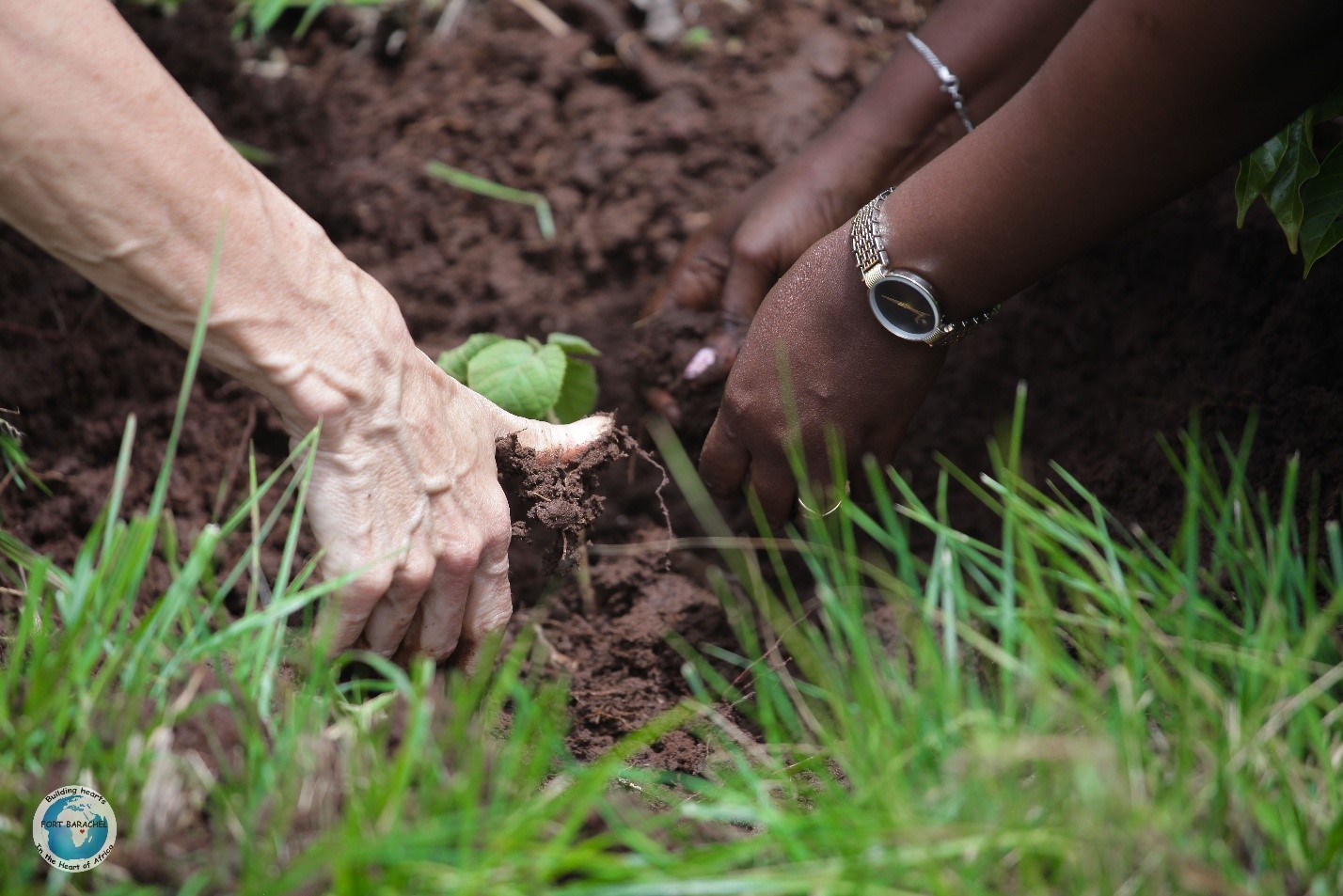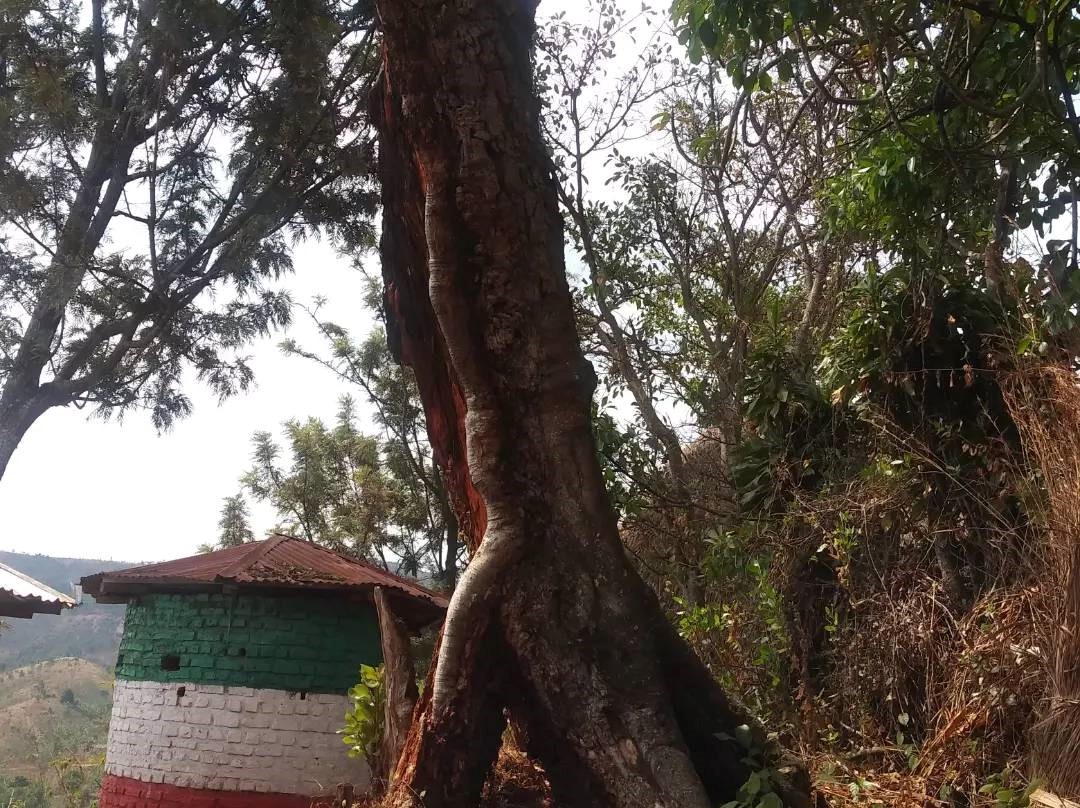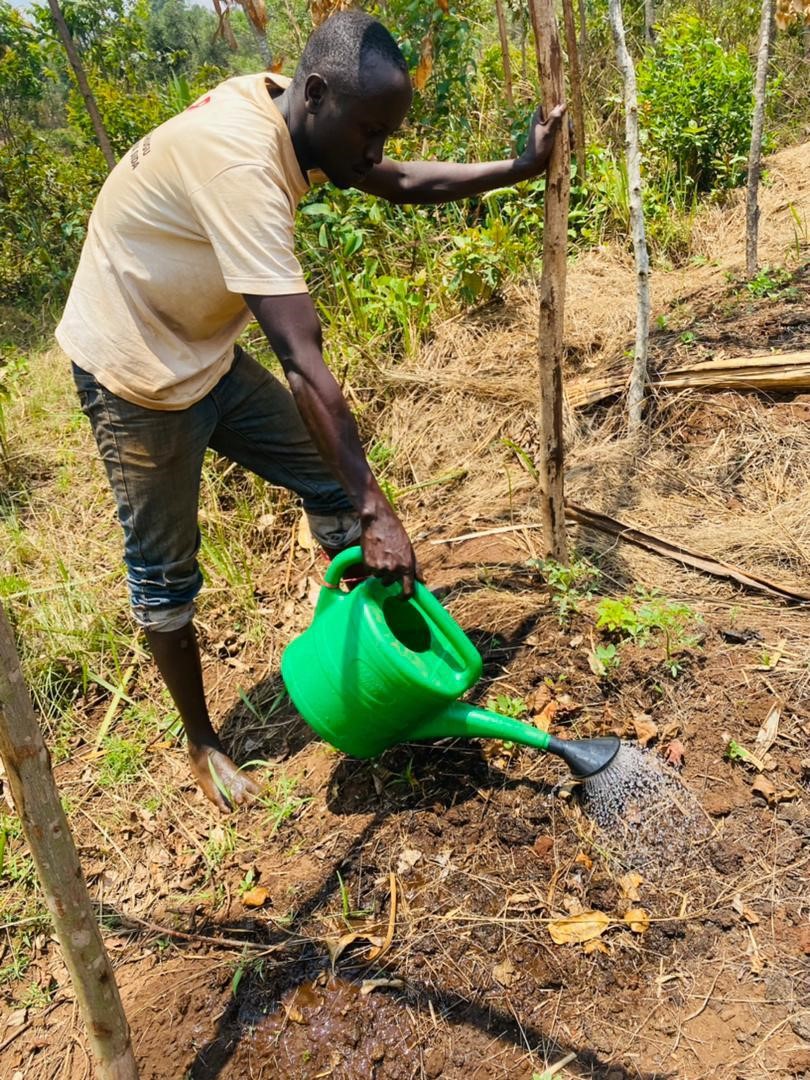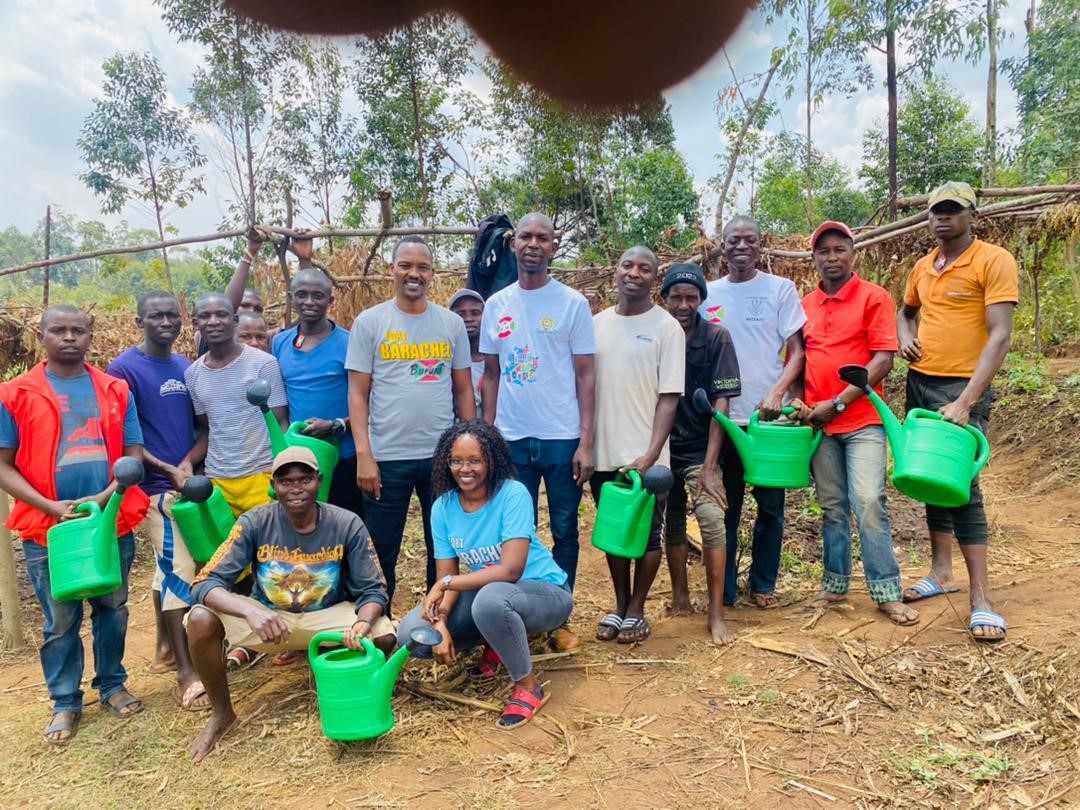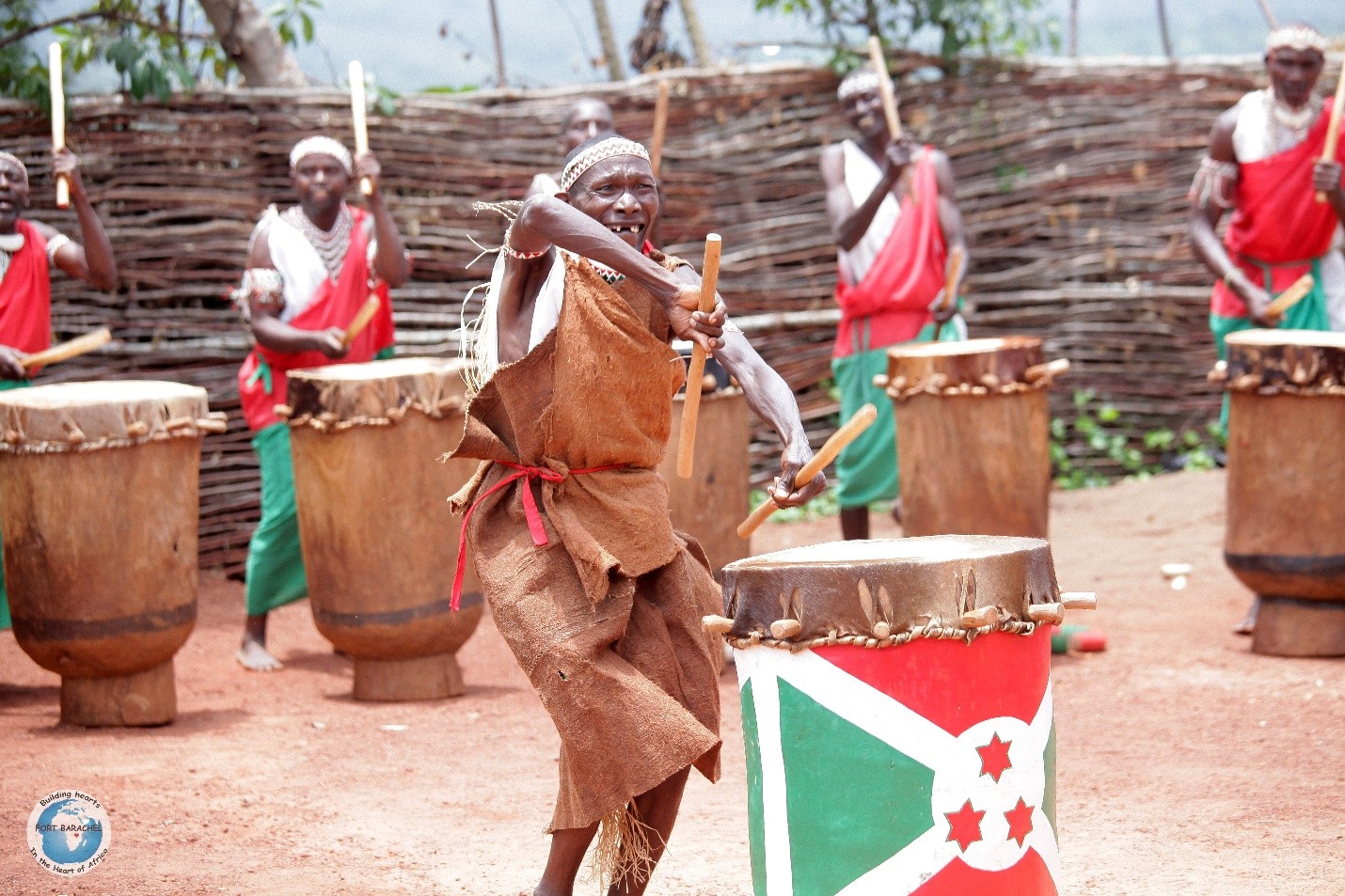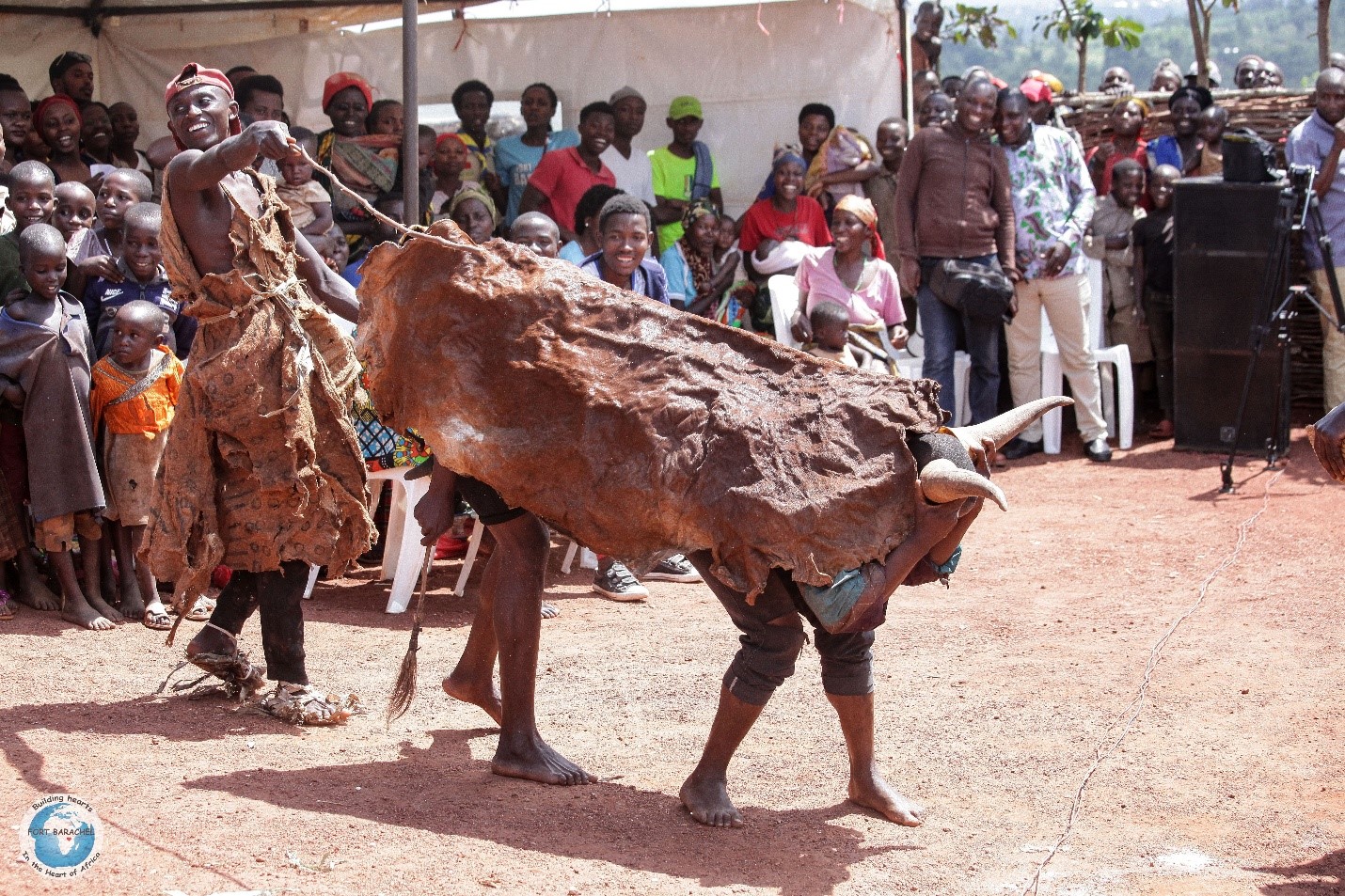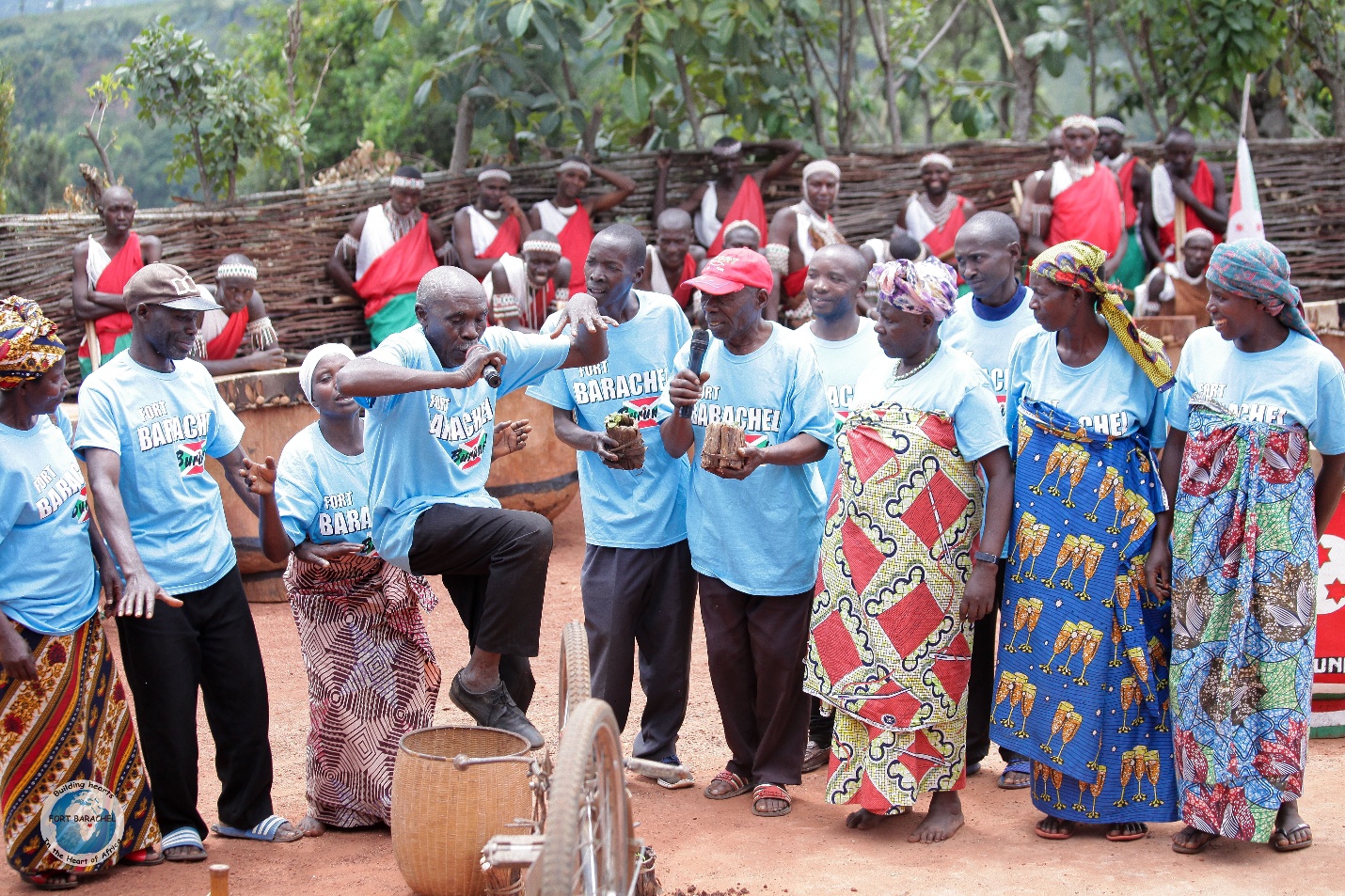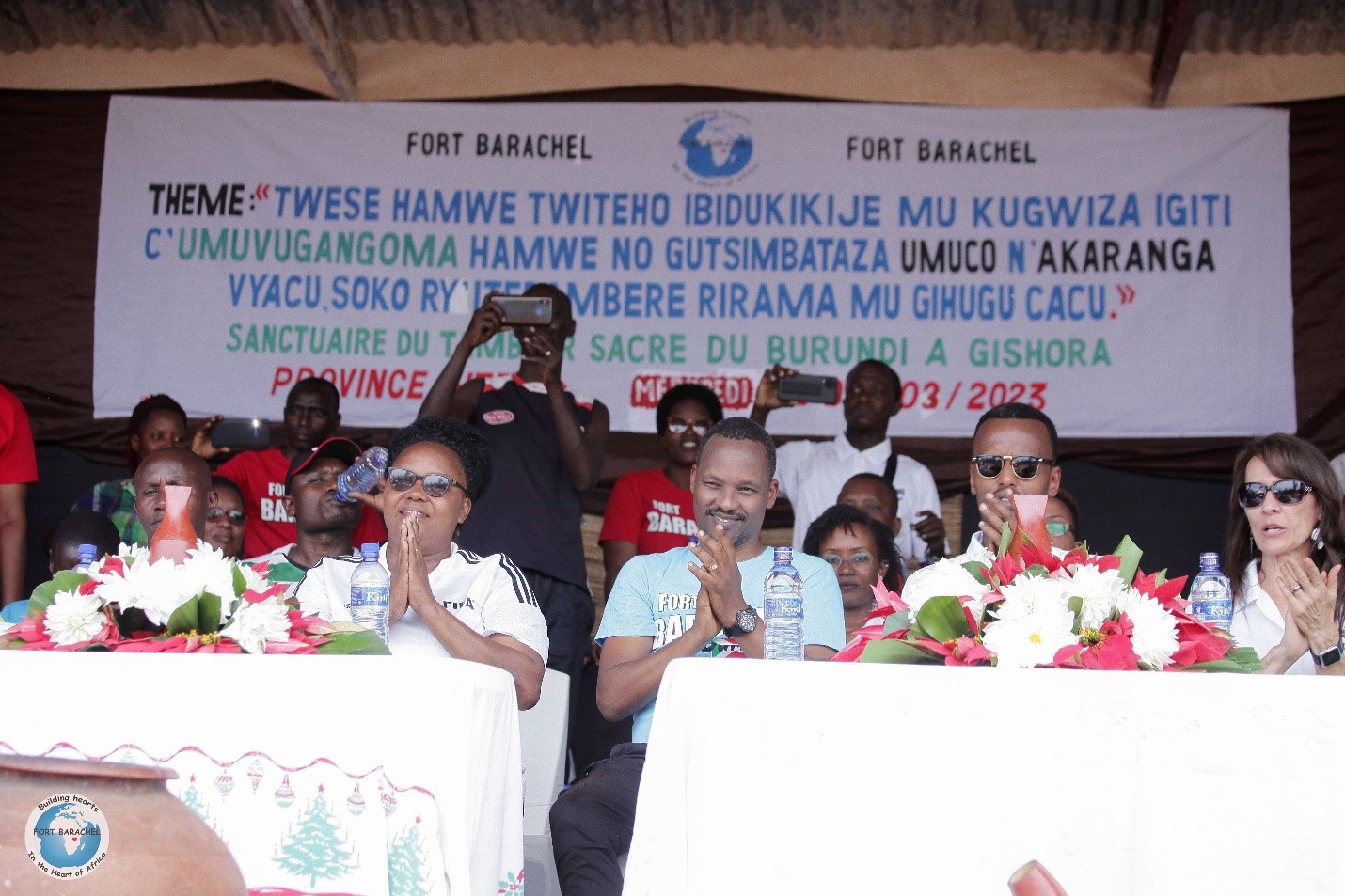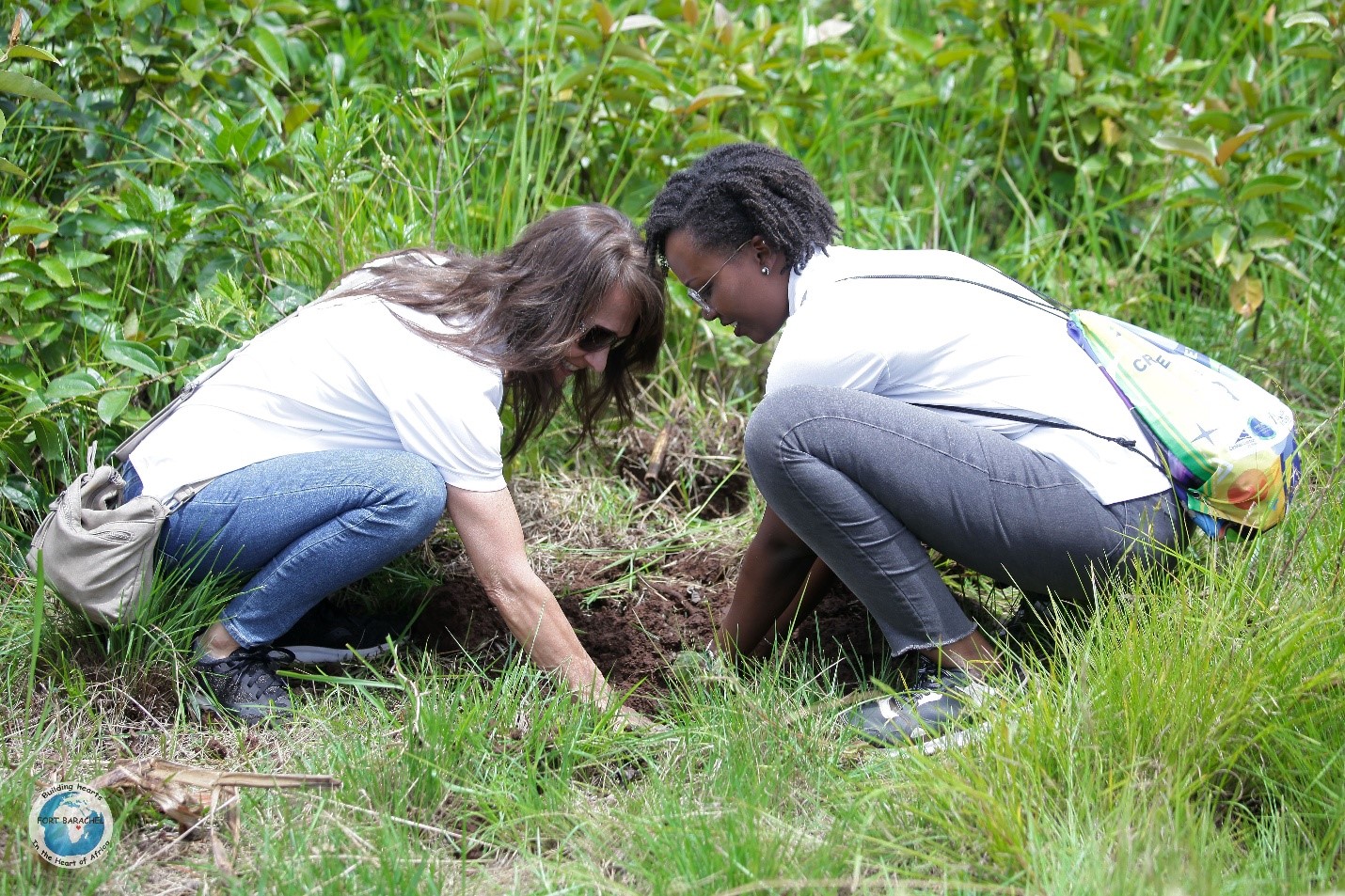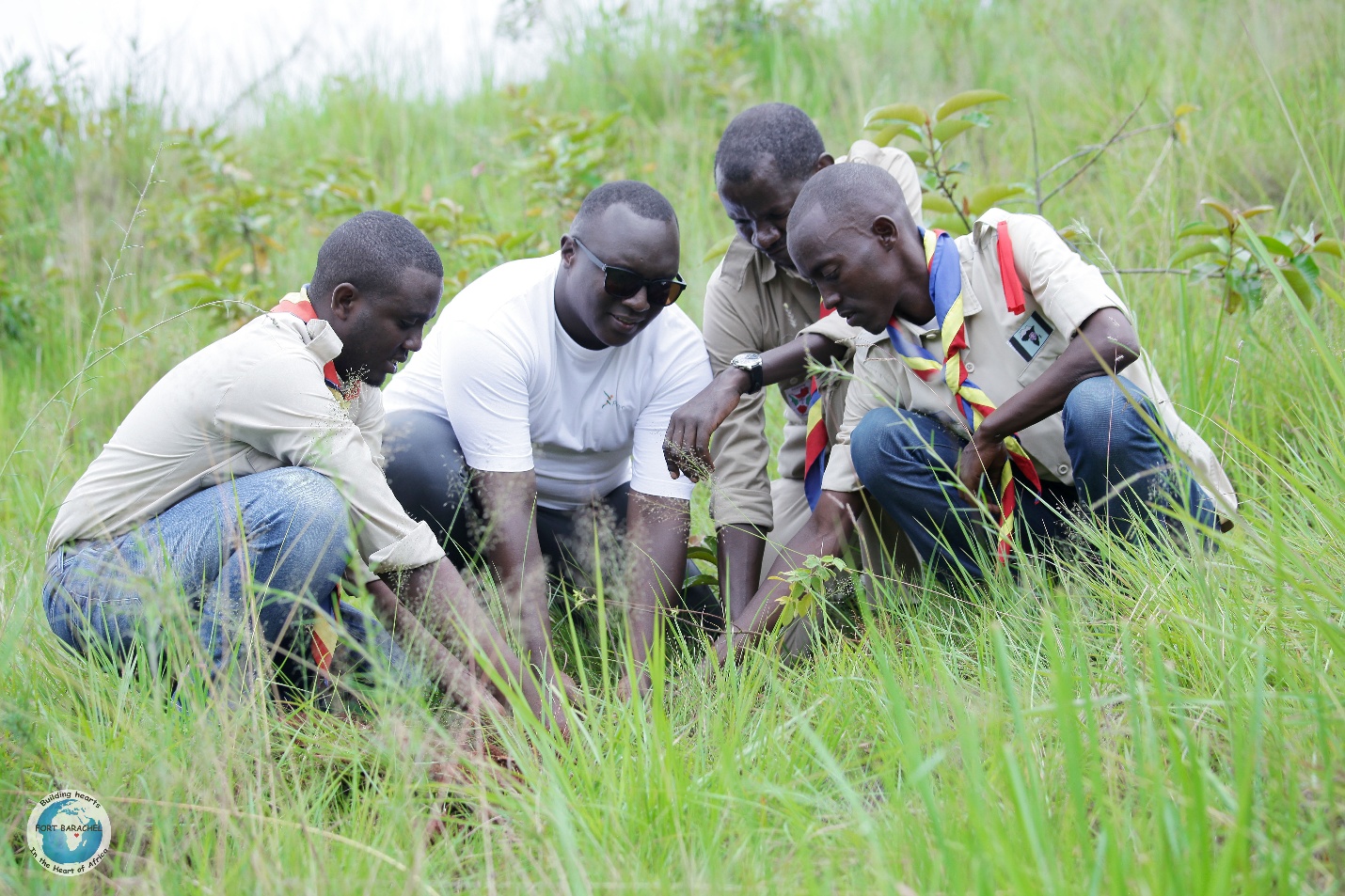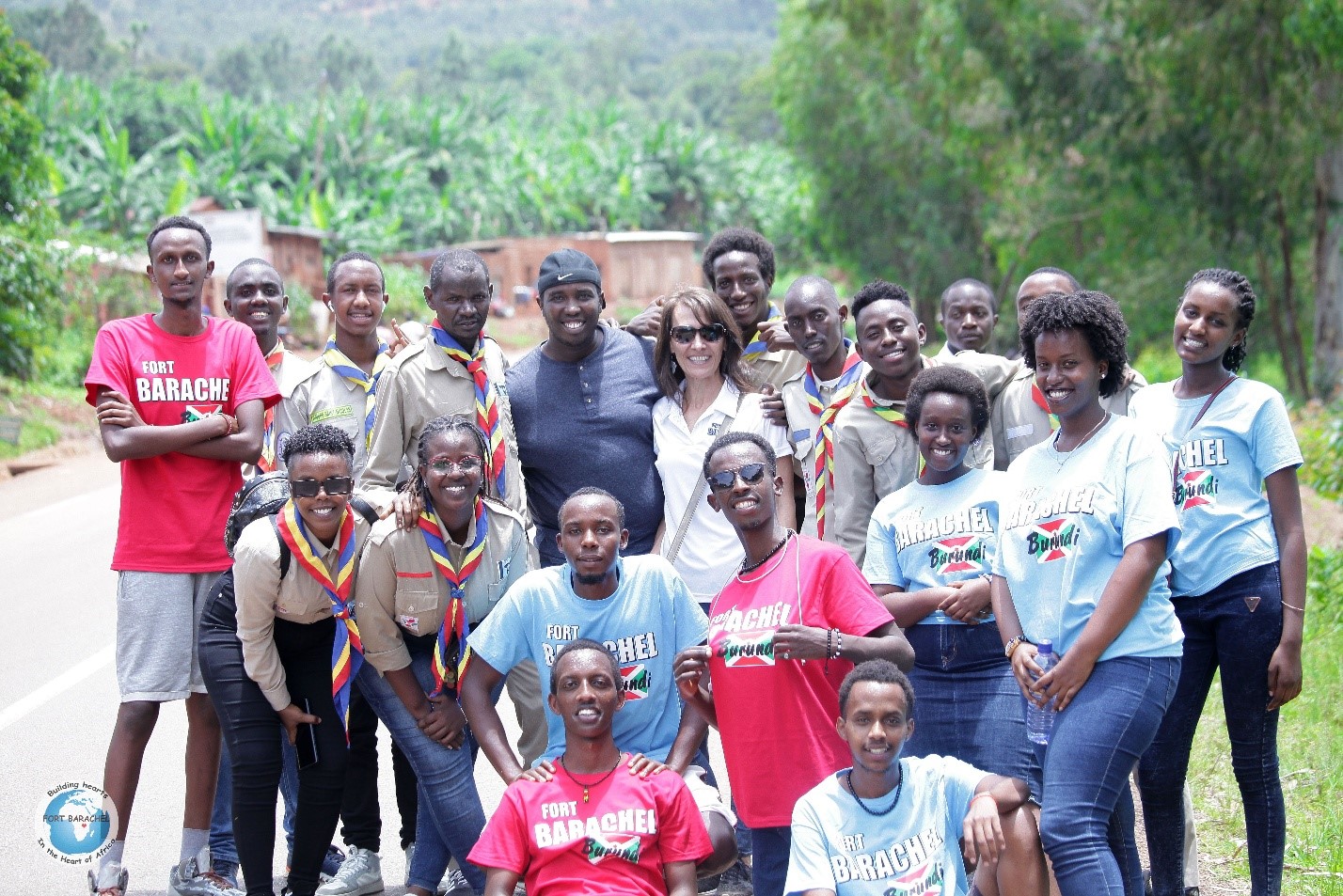. Umuvugangoma, a tree with a great historical and cultural significance for Burundi
. Fort Barachel contributing to restoring Umuvugangoma, a tree under disappearing threat
. Batimbo’s (Drummer’s) word of recognition to Fort Barachel and their partners’ contribution and what next according to them
Gishora (Gitega Province), March 1st 2023. Its 10h55 a.m. Hundreds of people are gathering on 12th National Road (Gitega-Karusi) next to the IRAZ’s (Institut des Recherches Agronomiques et Zoologiques) area. Almost everyone is holding an Umuvugangoma seedling in their hands.
Local population holding Umuvugangoma seedlings, ready to plant them/photo/FortBarachel
Soon after, they invade the marsh of the IRAZ domain, the communal administrator of Giheta commune in Gitega Province in front of them. Each one then starts putting in the ground this seedling with more than eight centuries of history.
Participants to the planting activity, the communal administrator of Giheta commune in Gitega Province in front of them, going down to the IRAZ domain to plant the seedlings/photo/FortBarachel
Participants to the planting activity going down to the IRAZ domain to plant the seedlings/photo/FortBarachel
Participants planting the seedlings in the IRAZ domain/photo/FortBarachel
Umuvugangoma, a tree with a great historical and cultural significance for Burundi
“It’s in the 1300’s that would have appeared for the first time something we can call ingoma (- Burundian – drum)” says Denis, a drummer at the Gishora sanctuary. “And in those ancient days, each family/tribe had an ingoma of its own established by the head of the family/tribe”.
“But the first drum uniting all the Burundian families/tribes comes with a man named Kanyeburundi in Nkoma (Rutana province in eastern Burundi). He covered a pit with the skin of a cow that his grandpa had offered him in recognition of his extraordinary gifts and his heroism. Then a snake coming out of the pit found itself trapped in it. It started hitting on the skin trying to get out and, occasionally producing a sound similar to the sound of a drum”.
“Batwa (indigeneous people) hunting heard the beating sound and eventually came to see what was happening. They marveled to what he has done and immediately inducted him as king. Kanyeburundi then became the first king of Burundi with ‘Ntare I Rushatsi’ as his royal name”.
“Then they put the skin of the cow out of the pit and the snake escaped of it and run. The Batwa went after it, hunting it to eat it. It disappeared in a tree. They cut down the tree to try to find it but they couldn’t. They then tried to make out of that tree something which would have a sound as the one at the pit. There came out the royal drum known as Karyenda. That tree was later called Umuvugangoma (literary, tree producing drum sound)” recount Denis.
Umuvugangoma grown tree/Photo/FortBarachelBurundi
Fort Barachel contributing to restoring Umuvugangoma, a tree under disappearing threat
‘Cordia Africana’ is the latin language of Umuvugangoma. The planting activitity was a culmination of more than a year of work behind the scenes at Fort Barachel in collaboration with the drummers at the Gishora Shrine.
A drummer watering the Umuvugangoma nursery/photo/FortBarachelBurundi
Fort Barachel Country Director together with Gishora drummers’ chief looking at Umuvugangoma seedlings/photo/FortBarachelBurundi
Family picture after a field trip mission in Gishora for a follow up of the seedlings/photo/FortBarachelBurundi
“It started with a discussion with Batimbo (drummers) of Gishora, while on a simple touristic visit at the Shrine. They told us that if one would like to help them with anything, better would be to start by helping them to multiply the tree from which the Burundian drum is made – that is, Umuvugangoma” recall Yves Franck Irakoze, Fort Barachel country Director.
“It is in the process of disappearing and we fear that within a few years, it will no longer be possible to produce Ingoma (drums). To perpetuate this culture is our highest priority, not only for Burundi but also for the whole world” said back then Oscar Nshimirimana, the chief of Batimbo at Gishora Shrine.
Drummers are performing after the planting activity/ Photo/Fort Barachel
Girls dancing before guests after the planting activity/photo/FortBarachel
Performers showing how a Burundian shepherd leads a cow/photo/FortBarachel
Ninde troupe are playing a sketch on the importance of Umuvugangoma and the necessity to keep and perpetuate it/photo/FortBarachel
Guests of honor together with Fort Barachel country Director on the planting day/photo/FortBarachel
As a result, more than a year later, a total 3401 Umuvugangoma seedlings has been planted with the support of Fort Barachel and their partners, especially Crossroads Chruch and Heart of The City Foundation. The swamp of Karinzi (IRAZ area), hill Muremera, commune Giheta in the Province of Gitega is the first area chosen to plant this tree but the objective is to reach other areas to perpetuate this endangered species.
Fort Barachel partner and staff member planting an Umuvugangoma seedling/photo/FortBarachel
Scouts and ‘Babandi plogging’ participating in the planting activity/Photo/Fort Barachel
Scouts and ‘Jars of Love Community association’ with Fort Barachel T-shirts after the planting session/Photo/Fort Barachel
Family Photo of the planting day/Photo/FortBarachel
Aware also of their need to support their families, Fort Barachel with the support of their partners granted these guarantors of the Burundian cultural wealth that represents the Ingoma 23 pigs. “You don’t realize how significant the gesture you just made is! The impact of your support will be very great for our families because the manure given by the pigs is more productive than even the manure given by the cows,” said Oscar Nshimirimana, chief of the Batimbo of Gishora.




